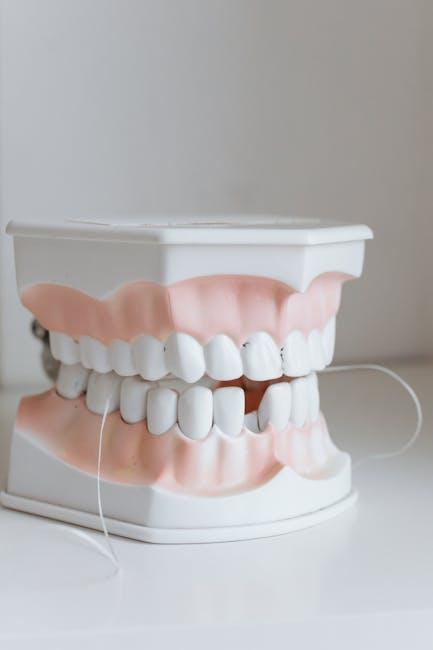Fluoride Ban Could Create Cavities For 1 Of Every 3 U.S. Kids – U.S. News & World Report
Fluoride has long been recognized as a powerful ally in the fight against tooth decay, particularly in children. However, recent discussions about banning fluoride in water and dental products have sparked alarm among dental health experts. According to U.S. News & World Report, such a ban could lead to cavities in as many as one in every three children in the United States. This article delves into the implications of a fluoride ban, the proven benefits of fluoride, and practical tips for parents concerned about their children’s dental health.
Understanding Fluoride and Its Role in Dental Health
Fluoride is a mineral that naturally occurs in water, soil, and various foods. It has been widely used as a dental health intervention since the mid-20th century. Its primary function is to strengthen tooth enamel, making it more resistant to acid attacks caused by plaque bacteria and sugars in the mouth.
How Fluoride Protects Teeth
- Remineralization: Fluoride helps rebuild weakened enamel by attracting minerals like calcium and phosphate.
- Prevents Demineralization: It inhibits the loss of essential minerals from enamel during acid attacks.
- Reduces Harmful Bacteria: Fluoride disrupts acid production by harmful oral bacteria, lowering cavity risk.
The Potential Impact of a Fluoride Ban on U.S. Children
Experts predict that banning fluoride from community water supplies and dental products could result in a dramatic increase in childhood cavities. The consequences extend beyond dental pain, affecting overall health, school attendance, and self-esteem.
Shocking Statistics
According to studies highlighted by U.S. News & World Report:
- Approximately 1 in 3 American children already face untreated dental decay.
- Fluoride supplementation currently prevents an estimated 25-30% of cavities in children.
- Banning fluoride could cause up to a 33% increase in cavities among kids.
Table: Impact of Fluoride on Children’s Dental Health
| Factor | With Fluoride | Without Fluoride |
|---|---|---|
| Cavity Incidence | ~20% of kids | ~33% of kids |
| Dental Visits Due to Decay | Reduced frequency | Increased frequency |
| School Absences for Dental Issues | Lower | Higher |
Benefits of Fluoride in Community Water
Community water fluoridation is regarded by the Centers for Disease Control and Prevention (CDC) as one of the top public health achievements of the 20th century. Here’s why:
- Cost-Effective: Every $1 invested in water fluoridation saves an estimated $38 in dental treatment costs.
- Equitable: Fluoride benefits people of all ages and socio-economic groups.
- Continuous Protection: It provides round-the-clock cavity prevention, especially benefiting children who may have limited access to dental care.
Concerns Around Fluoride and The Ban Debate
Despite its many advantages, fluoride also faces skepticism and opposition, with critics citing potential health risks, including toxicity and fluorosis (excessive fluoride exposure causing enamel discoloration). These concerns have fueled movements pushing for bans or reduction in fluoride use.
However, experts emphasize that fluoride in recommended levels is safe and effective. The American Dental Association (ADA) maintains that the benefits of fluoride outweigh the risks when used properly.
Practical Tips for Parents to Protect Children’s Teeth Without Fluoride
Whether or not fluoride use is restricted, parents can take proactive steps to maintain their children’s dental health:
- Maintain Good Oral Hygiene: Encourage brushing twice daily using appropriate brushes and techniques.
- Monitor Sugar Intake: Reduce sugary snacks and drinks that promote cavity formation.
- Regular Dental Checkups: Schedule professional cleanings and early cavity detection.
- Use Fluoride Alternatives: In fluoride-free scenarios, consider sealants and calcium phosphate products as protective coatings.
- Educate Children: Teach the importance of caring for their teeth and mouth health.
Case Study: Communities Without Fluoridated Water
Multiple studies have examined dental health trends in communities without fluoridated water supplies:
- Children in those areas had higher cavity rates by 15-40% compared to fluoridated areas.
- Dental treatments and related costs were significantly increased in non-fluoridated regions.
- Parents reported more missed school days due to dental pain and procedures.
Summary Table: Dental Health in Fluoridated vs. Non-Fluoridated Communities
| Community Type | Average Cavities per Child | Annual Dental Costs per Capita |
|---|---|---|
| Fluoridated | 1.2 | $250 |
| Non-Fluoridated | 1.8 | $400 |
Conclusion: The Importance of Fluoride for Children’s Dental Health
The notion of banning fluoride in the U.S. represents a potential public health setback—especially for children. The evidence clearly shows that fluoride plays a critical role in cavity prevention and maintaining overall dental health. A ban could lead to significant increases in cavities for one in every three children, increasing costs and reducing quality of life.
Parents, caregivers, and policymakers should weigh the scientific consensus and prioritize proven protective measures. For families, focusing on good oral hygiene, balanced nutrition, and regular dental visits are essential steps to safeguard children’s smiles—whether or not fluoride remains part of routine care.
For more information on fluoride and children’s dental care, visit the American Dental Association or consult your dentist today.


